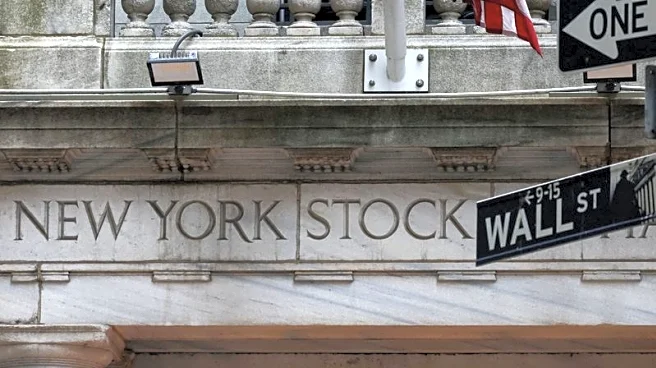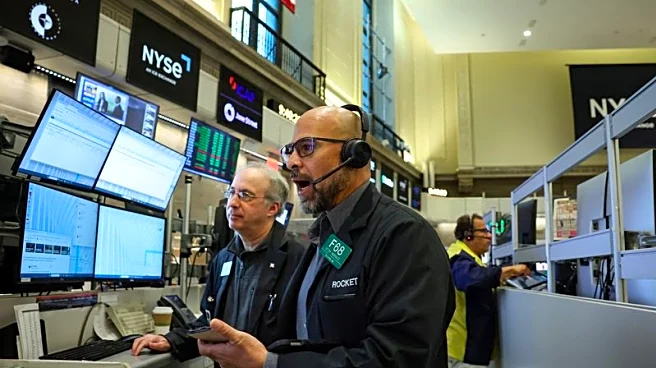What's Happening?
Jefferies has increased its year-end target for the S&P 500 index to 6,600, citing strong second-quarter corporate earnings and easing concerns about the U.S. economy's health. Previously, Jefferies projected the index below 6,000. The brokerage's optimism is supported by 80% of S&P 500 companies surpassing earnings estimates, a significant improvement over historical averages. The market recovery follows a downturn in April due to President Trump's tariff announcement. Jefferies also anticipates S&P 500 earnings per share to rise nearly 10% this year, reflecting solid profit growth. Additionally, Jefferies expects three more interest rate cuts by the Federal Reserve, starting in September, influenced by Chair Jerome Powell's cautious tone.
Why It's Important?
Jefferies' revised target for the S&P 500 underscores confidence in the U.S. economy's resilience, driven by strong corporate earnings. This optimism may influence investor sentiment and market dynamics, potentially leading to increased investment activity. The forecasted interest rate cuts by the Federal Reserve could further stimulate economic growth by reducing borrowing costs. However, ongoing tariff concerns remain a potential headwind for companies, affecting volumes and margins. The brokerage's bullish outlook contrasts with cautious signals from companies managing tariff impacts, highlighting the complex interplay between market optimism and real-world challenges.
What's Next?
The anticipated interest rate cuts by the Federal Reserve may lead to increased liquidity in the market, potentially boosting investment and consumer spending. Companies may continue to implement strategies to mitigate tariff impacts, such as pricing adjustments and supplier shifts. The market's trajectory will depend on the durability of these mitigations and the persistence of trade pressures. Investors and analysts will closely monitor corporate earnings and economic indicators to assess the sustainability of the current market optimism.
Beyond the Headlines
The divergence between brokerage optimism and corporate caution reflects broader economic uncertainties, including trade tensions and geopolitical factors. This dynamic may influence future policy decisions and market strategies, as stakeholders navigate the complexities of global trade and economic growth. The focus on AI-related companies and financials highlights the evolving landscape of the U.S. economy, driven by technological advancements and macroeconomic factors.













